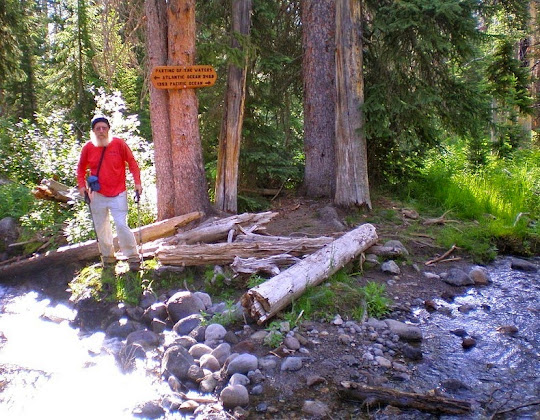Within the Teton Wilderness area of Bridger-Teton National Forest, in Wyoming, USA, lies a very unremarkable creek with a remarkable hydrological phenomenon. At the Two Ocean Pass, a mountain pass on the continental divide, the creek abruptly splits into the separate streams; one goes off to the left and the other to the right. Each stream keeps going, joined by larger and larger streams, and eventually reach the oceans. The stream to the left, called the Atlantic Creek, travels 5,613 km, joining up with the waters of the Mississippi river and winding up in the Atlantic Ocean. The stream to the right, called the Pacific Creek, undertakes a 2,177 km trip joining up with the Snake and Columbia Rivers and empties into the Pacific Ocean. Aptly named the Two Ocean Creek, it’s the only one in the United States that breaks and ends up in two different oceans. The point where the bifurcation occurs is called “Parting of the Waters”, and it sits directly atop the Continental Divide.

Technically, it’s possible for a fish to make the nearly 10,000 km freshwater journey from the Pacific Ocean to the Atlantic Ocean via the Two Ocean Creek. In fact, it is believed that this was how the cutthroat trout migrated from the Snake River (on the Pacific drainage) to Yellowstone River (on the Atlantic drainage).
This site received designation as a National Natural Landmark in 1965, bearing the official name of Two Ocean Pass National Natural Landmark. Parting of the Waters is located about 640 meters northwest of the low point of Two Ocean Pass, where North Two Ocean Creek emerges from its drainage basin on the side of Two Ocean Plateau.


 Source
Source




